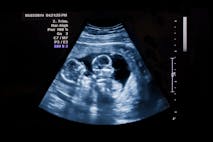
Pro-lifer arrested outside California Planned Parenthood plans to continue outreach
Nancy Flanders
·
Issues
Wesley J. Smith
·
Media
Nancy Flanders
·
Human Interest
Bridget Sielicki
·
Issues
Michael J. New
·
Issues
Right to Life UK
·
400k+ Readers Strong & Growing
News & Commentary from
A Pro-Life Perspective
As the news arm of Live Action, we educate the public and advocate for preborn rights by providing timely, accurate, and compelling news and stories about the pro-life movement.

Issues
Wesley J. Smith
·
Media
Nancy Flanders
·
Human Interest
Bridget Sielicki
·
Issues
Michael J. New
·
Issues
Right to Life UK
·
Issues
Nancy Flanders
·
Human Interest
Melissa Manion
·
Activism
Nancy Flanders
·
Issues
Nancy Flanders
·
Analysis
Cassy Cooke
·
Media
Kelli Keane
·
Analysis
Cassy Cooke
·